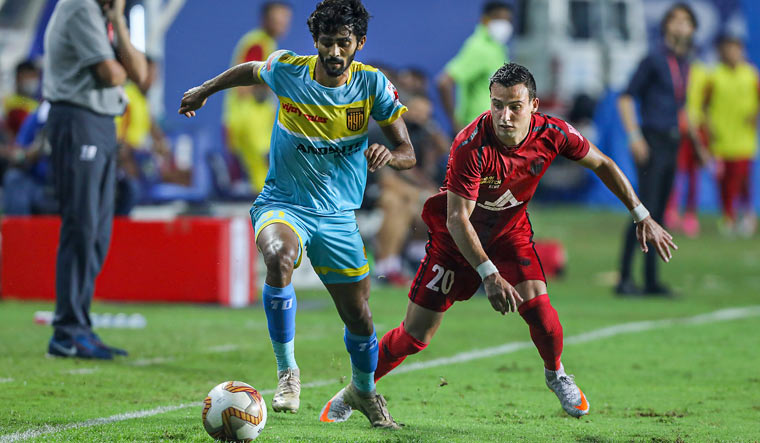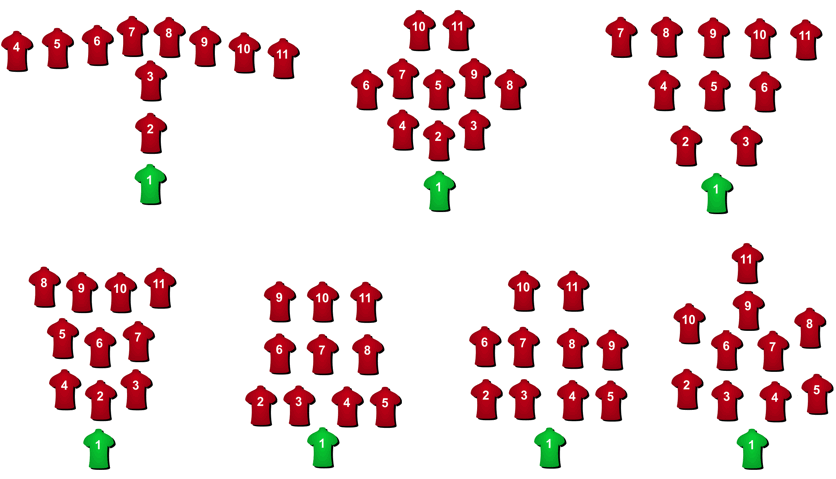Evolution of full-backs
Akash Mishra was instrumental in Hyderabad FC’s Indian Super League (ISL) triumph the previous season. His speed, defensive abilities, overlapping, and crossing capabilities from the left flank grabbed attention. Akash made three assists and scored two goals in the ISL. Soon, he received a call-up from the national team for friendlies against Oman and UAE.
The 20-year-old’s rumored move to Japanese second-tier team Machida Zelvia is the talk of the town. The reasons are many. First, few full-backs from India have been in talks with Asia’s top leagues.
The second is his age.
Third, the role of a full-back has evolved over the years, and it is one of the most crucial positions in football now.

Earlier, full-backs were only responsible for defending. Now, they are equally liable to support the attack. Teams prefer playing compact in midfield and leave the wide areas to exploit.
The evolution of football’s defensive roles
Historically, a team would comprise fewer players in defense. A typical 1-1-8 formation was the norm for a long time. Teams would line up with a defender, midfielder, and eight attackers.
Imagine, one defender against eight players. It’s similar to Sehwag facing four spinners and four pacers at the same time!
As the rules of football kept changing, the formations changed as well.

Slowly, the emphasis on attackers reduced, and it shifted to having a three-man defense and four players in midfield. Full-backs were solely responsible to perform their defensive duties for the longest time.
In the late 1930s, Domingos da Guia, a Brazilian defender, brought about the evolution of full-backs. Being ferocious while defending, Domingos was an asset to any team.
Although he lacked pace, his calmness and composure with the ball saw him take on opposition defenders and contribute to attacks. This changed the way a full-back’s role was perceived. For the first time, a defensive player was seen contributing actively in attacks.
In 1958, Brazil won the World Cup. Nilton Santos and Djalma Santos, the two full-backs, were the key contributors to the win. Brazil are pioneers in producing the best full-backs starting from Cafu, Roberto Carlos, Marcelo, and several others.
“Now we see that teams everywhere play very compactly to create space for the full-backs to go forward. Defensive qualities are still important, but now you need power and technique to become a full-back. You need to defend and attack,” said Roberto Carlos, in an interview with SkySports.
The qualities of a full-back
A full-back needs to be a quick-thinker, calm, and technically sound. Additionally, a modern-day full-back must be tactically and technically adept during transitions.
The best full-backs know how to place themselves in the right position, exploit space on the pitch while attacking, and fall back immediately when the team loses possession.
“It is the most underrated role in football. While training full-backs, we at Bhaichung Bhutia Football Schools emphasize game situations where two strikers face two defenders, one striker faces another defender, the diagonal runs, third man runs, and how to extend the compactness of the back four. There are various customized curriculums focused on training our players. However, as each role in football keeps evolving, our coaching modules change as well. I feel with the rapid changes in football tactics, every player has much more clarity on their deliverables,” said Akshay Unni, Technical Manager at enJogo-BBFS.
It is often seen that one of the best players in a football team is a full-back. Look at Trent Alexander Arnold of Liverpool or Alphonso Davies of Bayern Munich. Based on team formations, the roles keep changing. There is also wing-backs, who are an evolved version of full-backs. But let’s keep the discussion on that for another day!
Read more about BBFS Residential Academy
Download enJogo, India’s first football learning app on Android and iOS
Read the last five editions from The Dugout:
#50 Gaurav’s pursuit of happiness
#49 Leaving IT to pursue Football Coaching
#47 Garhwal Heroes FC launches India’s first and only college football program
